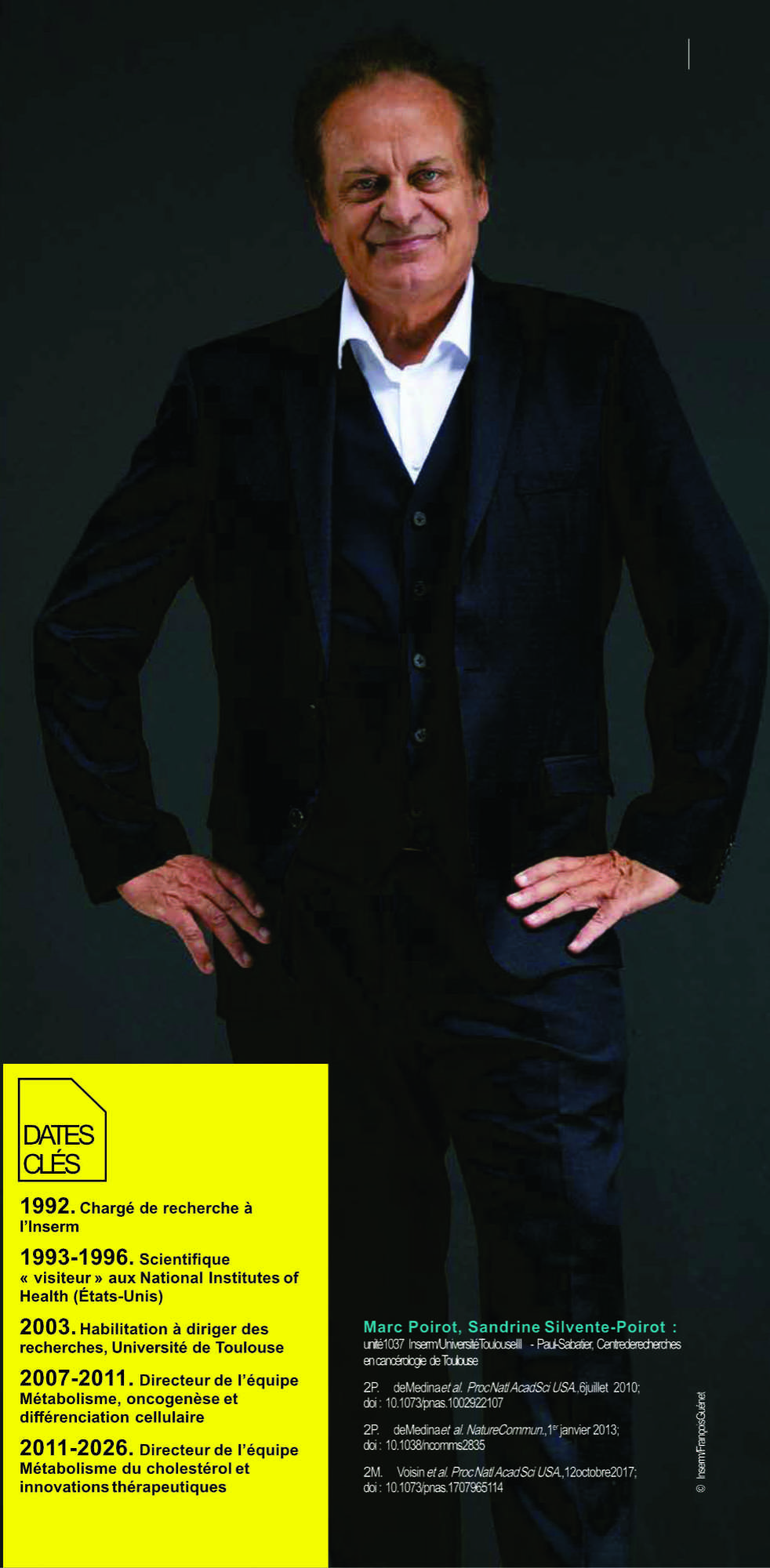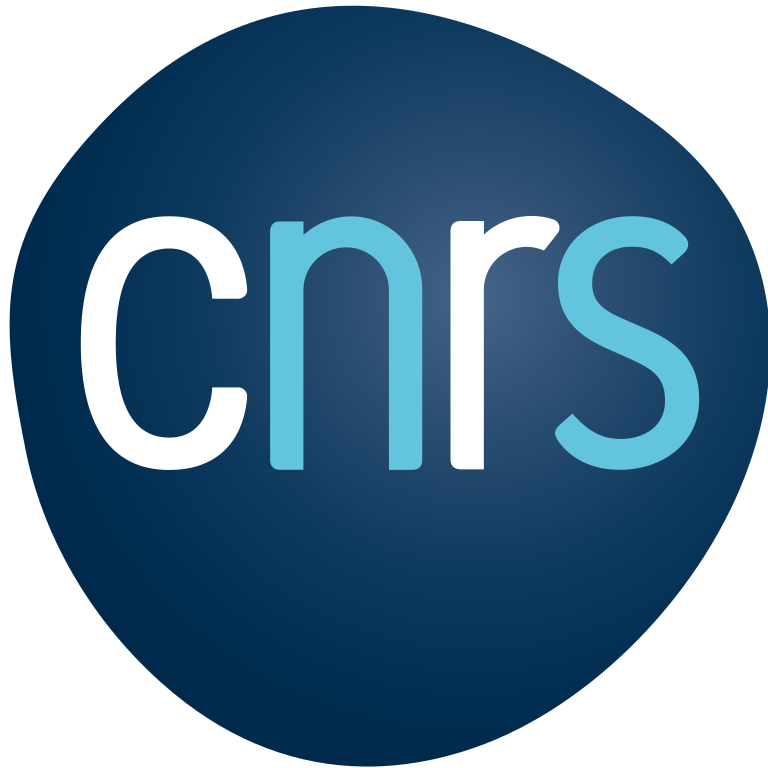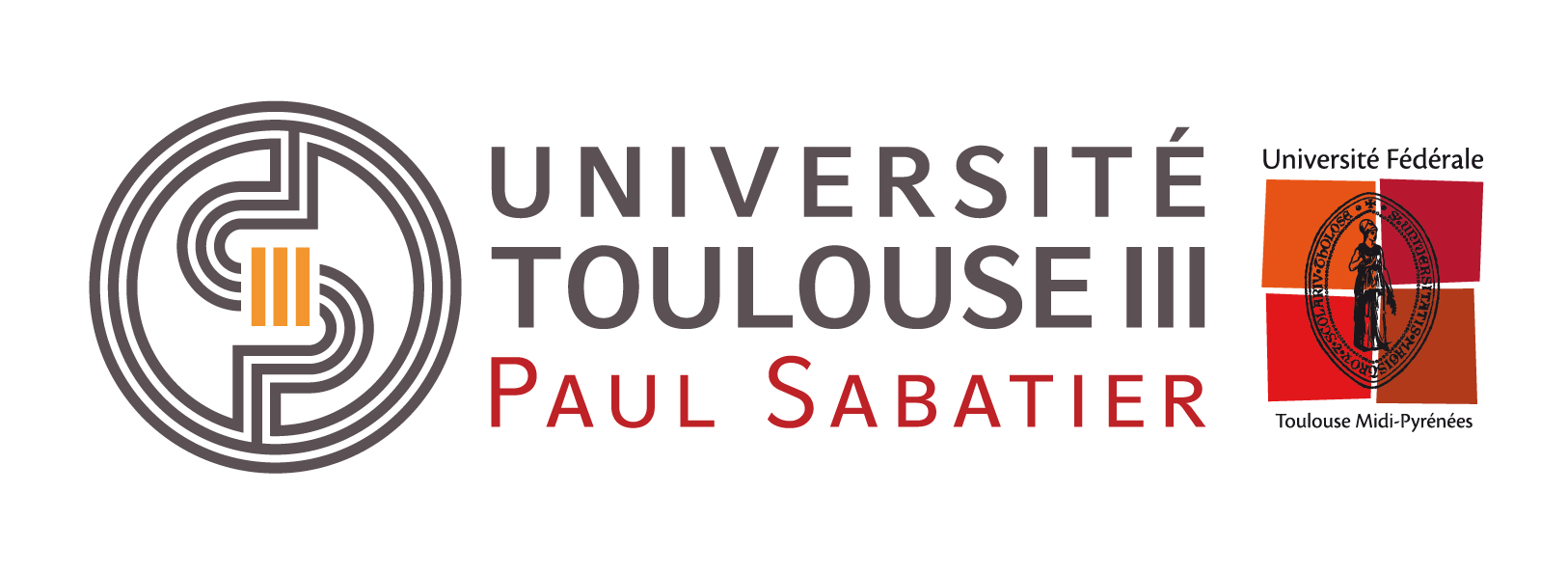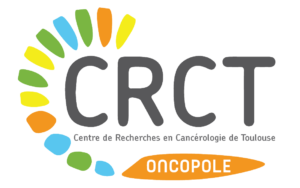Fascination with new therapeutic approaches
Ever since he was a student, Marc Poirot has been captivated by the union of biology and chemistry, two disciplines that until then had been compartmentalised. From this marriage, the Inserm research director has drawn the threads of new cholesterol transformation pathways and their involvement in breast cancer. His work was recently awarded the Schroepfer Prize by the American Oil Chemists’ Society.

Ask any researcher when their fascination with science began and almost everyone will say “since childhood! Marc Poirot is one of them. “I was first attracted to biology, I observed nature a lot and I always had an encyclopaedia at hand to find answers to my questions”, he recalls. Five decades later, the researcher still has this passion: every day, in his team’s offices on the Cancéropôle site in Toulouse, he tries to understand this nature that fascinated him from a very young age, now in its most specialised aspects: the metabolism of cholesterol and the effects of its deregulation in breast cancer. Before reaching this point, the scientist’s educational path was shaped by a series of decisive encounters. He met his philosophy teacher, Olivier Schwartz, who convinced him to take up experimental science. Then with organic chemistry, which led him to discover the possibility of creating customised molecules. Then there was Jean Asselineau, a former laboratory director at the CNRS, who encouraged him to enrol in a new doctoral programme combining chemistry and biology, whereas it had previously been impossible to follow a course combining the two disciplines, forcing the young student to juggle the timetables of two master’s degrees. Finally, he met Sandrine Silvente while waiting in the university registration queue. “It was love at first sight and we never left each other’s side”, he says of the woman who would become his wife and with whom he would later found the Cholesterol Metabolism and Therapeutic Innovations team. Just as he was beginning to work in the German chemical industry, a chemistry professor, Jean-Jacques Périé, informed him of the creation of a postgraduate diploma (DEA) in the chemistry of biomolecules: there was no way he was going to miss out on this revolution that the scientist had foreseen since the start of his studies, the ‘marriage’ of biology and chemistry! So Marc Poirot began a thesis with Jean-Charles Faye, a chemical engineer and researcher at Inserm. “I developed chemical tools and identified the AEBS (anti-oestrogen binding site), which is a pharmacological target of tamoxifen, a drug used to treat hormone-dependent breast cancer”, he recalls. At a time when campuses were not connected, Marc Poirot exhausted university bibliographic resources to extend his knowledge of chemistry and biochemistry. It was there that he discovered the existence of steroidal alkaloids, substances that were then thought to be excluded from the animal kingdom but which had specific physicochemical properties and were often bioactive in humans. “To my knowledge, no one had ever researched their existence in mammals”, he recalls of these cholesterol derivatives, which were to become central to his research.
After a post-doctorate at Sanofi, where he continued to characterise the AEBS site, followed by a research post at Inserm in the team of his mentor Jean-Charles Faye, Marc Poirot joined the National Institutes of Health in Bethesda, in the United States, where he worked on steroid hormone receptors. His research interests converged with those of his wife, Sandrine Silvente-Poirot, a CNRS researcher in biochemistry and molecular pharmacology, and they joined forces to create a cross-disciplinary research team at the Toulouse Purpan Physiopathology Centre.
At the heart of their work: cholesterol derivatives and their tumour-promoting and tumour-suppressing effects. The researcher and his team began by highlighting the hitherto unsuspected importance of cholesterol in the anti-cancer action of tamoxifen. They also demonstrated that the AEBS site targeted by this anti-cancer drug contained an enzyme called cholesterol-5,6-epoxide hydrolase (ChEH), which is crucial in the biochemical transformation of cholesterol. These observations lead scientists to believe that there may be an as yet unknown pathway for the transformation of cholesterol. To test this hypothesis, they synthesised cholesterol derivatives using natural amines such as histamine or polyamines. These derivatives, which they subsequently named “dendrogenins”, are steroidal alkaloids. “These dendro-genins turned out to be capable of inducing the differentiation of undifferentiated or dedifferentiated cells, which echoed our research into cancer because tumour cells are characterised by the loss of their differentiation state. We then searched for them and found them in mammalian tissues, thus proving the existence of bioactive steroidal alkaloids in humans”, sums up the researcher. Among these molecules, dendrogenin A (DDA) has remarkable anti-cancer properties. However, researchers have observed that cancer cells have lost the ability to produce DDA! “Sandrine has shown that instead of this molecule, they produce an oncometabolite, which we have called ‘oncosterone’, and which promotes the development of mam-mary tumours”, he continues.
These successive discoveries open up new possibilities for anti-cancer treatments, by acting on cellular mechanisms not previously targeted by conventional treatments. From the study of the tamoxifen binding site to these conclusions and their therapeutic implications, the road travelled seems dizzying. It is,” confirms Marc Poirot. At first, you feel overwhelmed by the tasks at hand. It’s only when you look back that you realise just how much work has been done, and what’s more, how successfully! The researcher, who in May received the prestigious Schroepfer Prize awarded by the American Oil Chemists’ Society, an American learned society interested in lipids in all their fields of application, is all the more appreciative of all the efforts made. It’s a great honour for me and my team,” he says. This prize is a clear encouragement to continue our work exploring this new meta-bolic pathway, which still promises to lead to major discoveries.
Alice Bomboy. Article published in Inserm magazine No. 58 October 2023

Centre de Recherches contre le Cancer de Toulouse (Oncopole)
Toulouse - FR
Nous contacter
+33 5 82 74 15 75
Nous rejoindre ?




